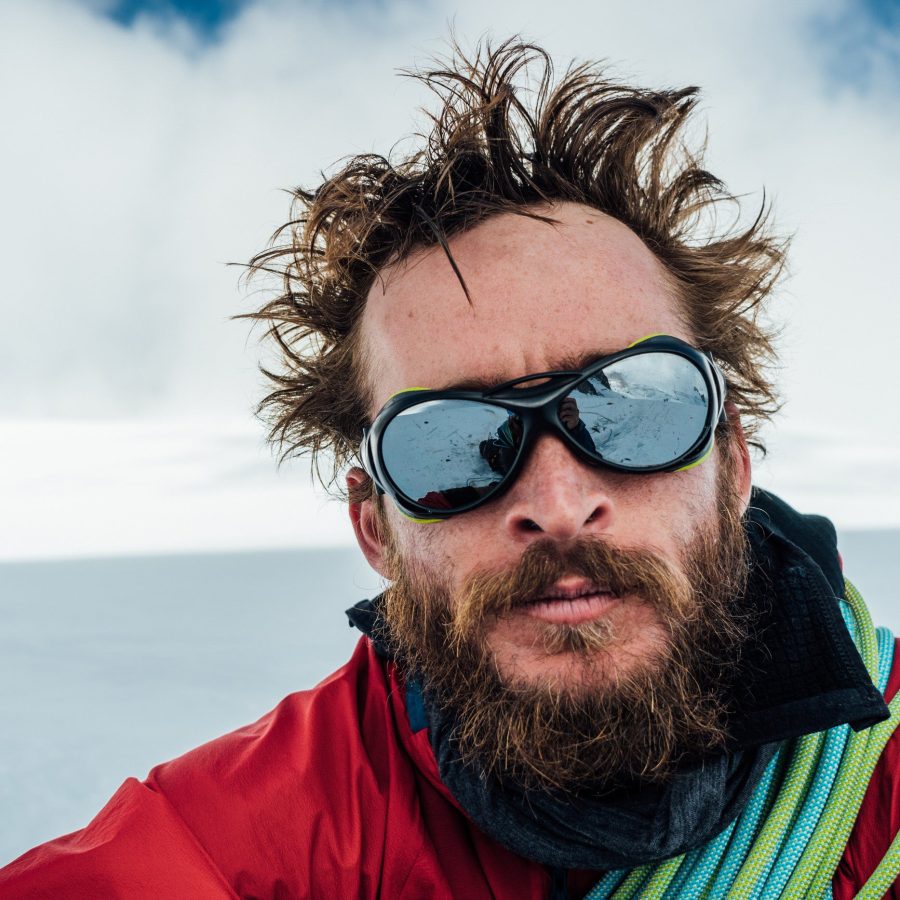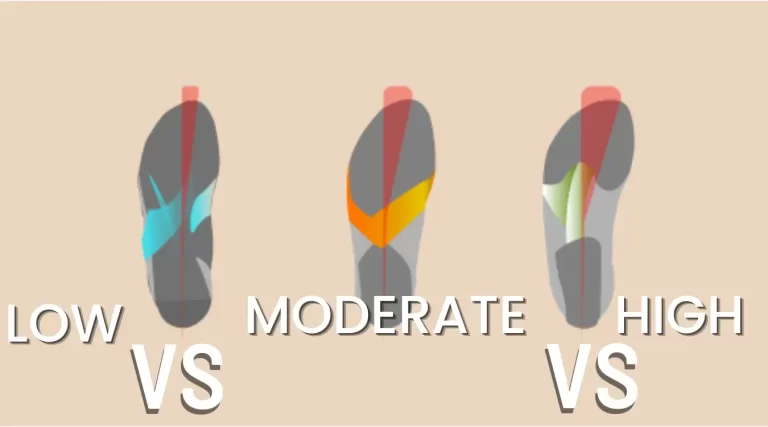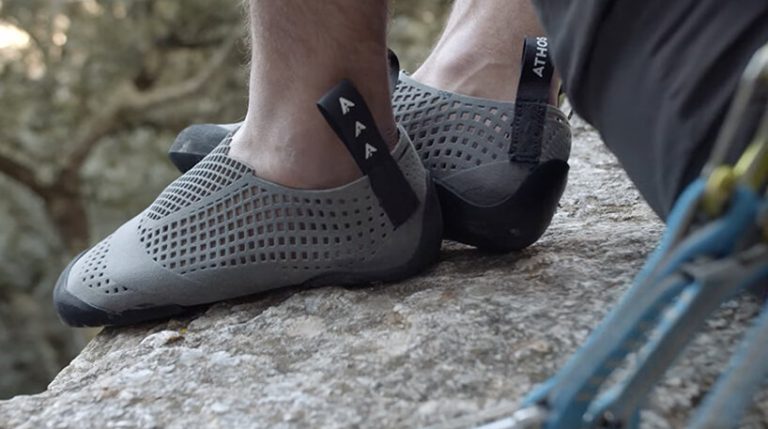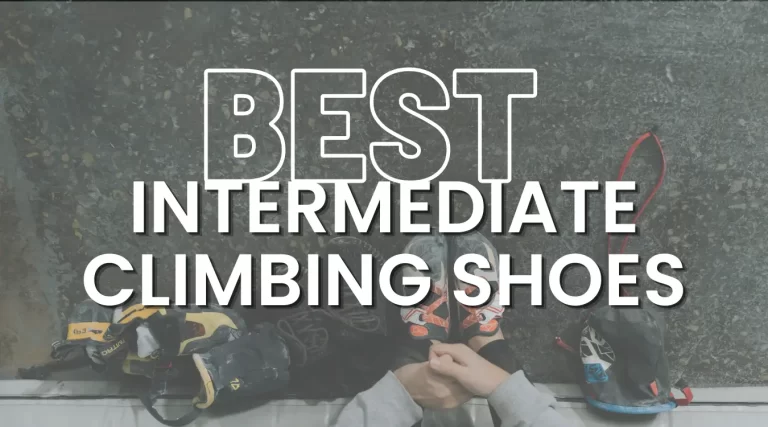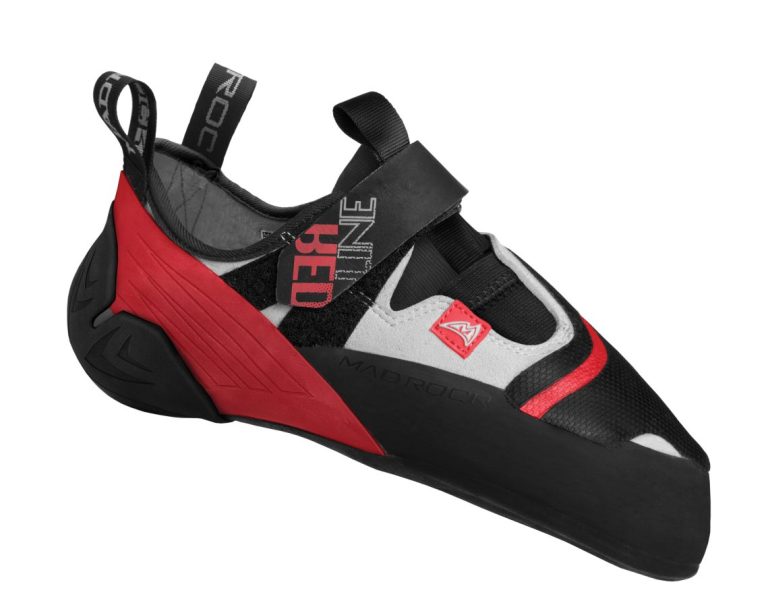Exploring the World of Glacier Glasses: Functionality, Protection, and Best Picks for 2024
Glacier glasses aren’t your average eyewear. They come with quite a list of perks, both in functionality and protection. We tested some of the best glacier glasses on the market for 2024. Read on to see how they performed, which is best for you, and get some buying advice.
Best Glacier Glasses
When it comes to glacier glasses, the options can be overwhelming. To help you make an informed choice, we’ve compiled a list of the top performers for 2024:
1. Best Overall Glacier Glasses: JULBO VERMONT CLASSIC
- Price: $149.95 to $219.95
- Weight: 1.4 oz
- UV Protection: 100%
- Light Protection (Spectrons): 3-4
- Scratch Resistance: Alti Arc
- Shock Resistance: Alti Arc/Spectron
- Score: 9/10
We love the classic and timeless style of the Julbo Vermont glasses. They run right in the middle of the mountaineering sunglasses we tested in both weight and price. What sets them apart is the exceptional durability, the UV and light protection they offer, and the high-quality build. The polycarbonate lenses are ultra-dark, with 5-12% VLT. We like that the vented leather side shields are removable, and the leather nose piece helps block rays from filtering in between the eyes. The Vermont glasses are made with flexible, soft, moldable ear grips for extended comfort, leather side shields for added protection, and durable metal frames. These glasses are comfortable, shock-resistant, and come with rubber temple arms and a hard case. They get our vote for the best overall glacier glasses.
2. Best Budget Glacier Glasses: BERTONI ALPS
- Price: $68
- Weight: 0.7 oz
- UV Protection: 100%
- Light Protection: –
- Scratch Resistance: –
- Shock Resistance: Shock-resistant nylon
The Bertoni Glaciers, created by a popular Italian company, are made for trekking through the mountains when going up against tough weather conditions. They have a robust feature set with anti-fog lenses and curved, flexible arms that wrap around the ears for a secure fit. We like the old-school leather side guards too. At 0.7 ounces and $68, they are both the lightest and least expensive model we tested. This makes them our top budget pick.
3. Most Durable Glacier Glasses: JULBO CHAM
- Price: $136 to $229.95
- Weight: 2.4 oz
- UV Protection: 100%
- Light Protection: 3-4
- Scratch Resistance: Alti Arc
- Shock Resistance: Alti Arc/Spectron/Spectron Polarized
The Julbo Chams are an updated re-release of an old favorite mountaineering glasses. Their aviator-style appearance coupled with leather side flaps, a leather nose shield, mirror lenses, and a metal frame design is sure to invoke some nostalgia in the original path-blazing mountaineers. We like that the polycarbonate lenses offer the option of either Spectron 3 or 4, and there’s a choice between polarized or mineral lenses. We found both lens options had a high level of scratch and shock resistance. This coupled with the flexible, adjustable frames makes them the most durable glacier glasses on our list.
4. Glacier Glasses with Best UV and Light Protection: OAKLEY CLIFDEN
- Price: $211
- Weight: 5.8 oz
- UV Protection: 100%
- Light Protection: 4
- Scratch Resistance: O-Matter Stress Resistant Technology
- Shock Resistance: O-Matter Stress Resistant Technology
The Clifden’s are Oakley’s first mountaineering sunglasses, and they are right in line with the typical athletic Oakley design. Our favorite part about these glacier glasses is the superior UV and light protection they offer, the best on our list. Outfitted with large round-tinted lenses with UV400 protection, side shields, light-blocking nose bridge, and the lenses offer 17% VLT. We think the plastic frame looks sleek with its matte finish. And it’s durable too. Oakley uses specialized technology in the lenses to enhance surrounding color and texture for better visibility of landscape details. There’s also a woven steel neck leash, a bag, a case for safe storage, and specially designed nose pads with enhanced grip to keep the glasses in place against the wind, snow, or sweat. They come in a polarized or non-polarized option. Though not the most expensive option, we don’t love that they will set you back $200+. They run right in the middle of the glacier glasses we tested weight-wise.
5. Best Ultralight Glacier Glasses: SUNSKI TREELINE
- Price: $89
- Weight: 1 oz
- UV Protection: 100%
- Light Protection: 3
- Scratch Resistance: CR-39 and triacetate cellulose quality lenses
- Shock Resistance: Passed the FDA basic impact test
The Sunski Treeline resembles a pair of regular sunglasses but don’t let the straightforward design fool you. They are the second least expensive glacier glasses on our list. And they are the second lightest. They provide average durability compared to other models we tested. They have all the features you need, but we like that they kept the feature set trimmed down to keep the weight off. They provide foldable, ventilated side flaps for better visibility and airflow, non-slip nose pads for comfort and enhanced fit, an attachable strap for security, and large polarized lenses for glare reduction. We found the UV and light protection to be average as well. It’s good enough to hold its own in most conditions. These are our top pick for the best ultralight glacier glasses.
6. Most Feature Packed Glacier Glasses: JULBO EXPLORER 2.0
- Price: $230
- Weight: 2.4 oz
- UV Protection: 100%
- Light Protection: 2-4
- Scratch Resistance: Alti Arc
- Shock Resistance: Alti Arc/Spectron
We love the look of the ultralight, sporty design of the Julbo Explorer 2.0 glacier sunglasses. If you want glasses filled with features the Julbo Explorer 2.0 is our pick. They offer Spectron 4, 5% VLT protection, ventilation, removable side shields, and come with an anti-fog coating. The lenses are polarized UV polycarbonate and there’s the option to choose a special Reactiv technology lens that either darkens or lightens depending on surrounding conditions. We found the glasses fit comfortably thanks to the soft-grip temples with adjustable stems and a shock-absorbent nose piece. The glasses also come with a neck cord and a microfiber pouch to protect against scratches. We found their design makes for a secure fit without feeling too tight. We don’t like that at 44 grams they are tied for the heaviest glacier glasses we tested. And we also don’t like that they are the second most expensive. But for the money, you get the most features of any model we tested, a comfy fit, and a modern sporty look.
7. The Other Noteworthy Models
- REVO TRAVERSE
- Price: $269
- Weight: 1 oz
- UV Protection: 100%
- Light Protection: –
- Scratch Resistance: Revo Crystal Lenses
- Shock Resistance: Lightweight, impact-resistant, glare-reducing Serilium+ nylon lens
The Revo Traverse’s blue lenses protect against many eye dangers like harmful glare off the mountains and even damaging blue rays on digital devices. All while simultaneously improving the clarity of both landscape features or details on a screen. We like the sporty look with a flat front profile and lightweight build. To cut additional weight these glasses dropped a lot of the “extras” for a simplistic style, making them feel and look more like an everyday pair of sunglasses. At 1 ounce, these are the second lightest glacier glasses we tested. Despite their minimal appearance, we like that they provide extended protection with thick, almost goggle-like frames. They have removable leather side flaps, shatterproof nylon blue water-polarized lenses, nose pads, and slip-resistant sidearms. The glasses are designed for both men and women. Size-wise, they run a little wide. These are the most expensive model we tested, at $269.
8. ELECTRIC JJF12
- Price: $220
- Weight: 1.2 oz
- UV Protection: 100%
- Light Protection: –
- Scratch Resistance: Hard coating
- Shock Resistance: Featherweight Grilamid® injected frames
The Electric JJF12 could fool you into thinking they were a pair of simple Wayfarers. However, they are actually a set of glacier (and surfing) glasses. The glasses have a Rilsan frame and 100% polarized lenses that protect 98% of blue light and have been treated with anti-reflective, anti-water, and anti-oil coating. Most notable to us is they’ve been injected with melanin to mimic the properties of sunscreen to protect the skin around the eyes. We weren’t able to definitively prove this works, but it is a cool idea. They block 100% of UV light but don’t come with a spectron rating, making it hard for us to rank these high in terms of light protection. We found the frames to be of average weight and durability. We don’t love that these ring up at $220, one of the more expensive options we tested.
Key Factors To Consider When Choosing
PRICE
The least expensive glacier sunglasses resemble normal sunglasses with a few extra features to increase their ability to block errant rays. High-end mountaineering glasses are highly engineered and designed to protect your eyes in extreme conditions and be extremely durable.
Glacier glasses that provide the greatest value:
- Sunski Treeline
- Bertoni ALPS
- Oakley Clifden
Most affordable glacier glasses:
- Bertoni ALPS
- Sunski Treeline
Premium glacier glasses (most expensive):
- Revo Traverse
- Julbo Explorer 2.0
WEIGHT
Glacier glasses are light, usually weighing no more than 2oz. The weight from pair to pair can vary depending on the design, “extra” features, and the materials used for the frame, side flaps, temple grips, and lenses.
Although heavier glasses may feel more robust, they can become uncomfortable if worn over a long period. Their increased weight also makes them more likely to slide off your nose.
The lightest glacier glasses:
- Bertoni ALPS
- Sunski Treeline
- Revo Traverse
UV & LIGHT PROTECTION
Never settle for any lenses that offer less than 100% UV protection. There are two types of UV rays your eyes need protection from.
UVA is the most common radiation. It can go directly through the eye’s cornea causing damage to both the retina and lens. Long-term exposure to UVA rays has been linked to cataracts, vision loss, and even macular degeneration.
UVB rays are found at higher altitudes. Although they aren’t capable of passing through glass, they can still reflect off surfaces and damage eyes.
Glasses with a UV400 rating are considered top-notch in protection against rays that fall on the high end of the wave spectrum (400 or below), including both UVA and UVB rays.
How dark a pair of sunglasses is broken down on a scale of 0-4. Each pair of sunglasses is rated on this scale, and their measurement refers to the protection they offer.
- Spectron 4 CF is the most expensive option and offers maximum light protection. It blocks 90% of visible light and is a necessity for mountaineering expeditions.
- Spectron 3 CF offers a high amount of UV protection and glare and is suitable for mountain activities and moderate-level expeditions. It will block around 80% of visible light.
The most comfortable glacier glasses:
- Oakley Clifden
- Julbo Cham
- Julbo Vermont Classic Glacier Sunglasses
DURABILITY
Although lenses can’t be 100% scratch-proof, many have an anti-scratch treatment applied to them which is a hard, clear coating for an added layer of protection. Polycarbonate lenses are the most durable and scratch-resistant lenses.
Another detail to consider is “shock resistance.” More shock-resistant glasses are made with materials that can bend and contort easier than a regular pair of sunglasses when dropped. They’re also less likely to shatter on impact.
The most durable glacier glasses:
- Sunski Treeline
- Revo Traverse
- Julbo Explorer 2.0
- Oakley Clifden
Other Things to Consider
Polarization
Should glacier glasses be polarized? Some say yes while others say no. The big concern with polarized glasses is how they can make it harder to judge landscapes because of distortion caused by the polarization. This can become a safety concern for mountaineers, especially when spotting crevices and terrain changes are of the utmost importance.
Material
Sunglass frames determine a lot in the way of weight, fit, and durability. Metal and plastic are the two main types of materials commonly used for frames. Both have their pros and cons, and really, a lot of it comes down to preference and style per user.
Side Shields
Side shields are usually made of either leather or plastic. Just as their name suggests, their purpose is to “shield” the peripherals from the sun. Shields can often be removed which is a nice feature if fogging becomes an issue in damp or humid conditions which happens if the sunglasses lack ventilation panels or haven’t been coated with an anti-fog treatment. Many wearers also remove the side panels when hiking at lower elevations where the extra side protection isn’t necessary.
Nose Guard
Nose guards are especially important because they give another level of coverage by blocking light from coming in between the eyes. When comparing plastic vs. rubber nose guards, rubber ones with built-in nose pads are more comfortable, a better fit, and they don’t slide as easily.
Side Arms
Sidearms are important for keeping your glacier glasses snug on your face. You’ll find models with extendable sidearms that will help you get that perfect fit. Some sidearms are also made flexible at the temple to allow you to wrap them around your ears for a secure fit. In addition, some manufacturers include rubber pads on the inside of the sidearms, or alternatively, make them entirely from a soft rubberish material to increase their adherence.
Look
There are a couple of style options you can go with: circular and retro or sleek and sporty. This can be left up to preference, although it’s noting that larger lenses have their benefits because they give a bigger circumference of protection around the eyes. For fit, make sure your glasses have a close and secure fit—both so they stay tight in windy conditions, and because a snug fit seals out the sun and gives better all-around protection.
Warranty
Most glacier glasses come with some kind of warranty, either two-year, limited lifetime, or lifetime, and the coverage offered varies from brand to brand. Many cover damages relating to manufacturer defects or the big stuff like busted hinges or cracked frames. Some even offer replacement lenses, within reason.
FAQs
Do I need mountaineering sunglasses?
Yes, you do. Mountaineering sunglasses are needed if you are going to be in high-elevation areas with lots of snow. These high-glare settings reflect light into your eyes from all angles making mountaineering sunglasses a must to protect your eyes.
Do you need polarized sunglasses for mountaineering?
Yes, you do need polarized sunglasses for mountaineering. Polarized sunglasses are needed for mountaineering in conditions in high-glare settings. Especially on snow and in the mountains where UV rays are the most intense.
Can glacier glasses be prescription?
Yes, glacier glasses can be prescription just like most sunglasses’ frames can be. Check with your eye doctor first to make sure you buy a part of frames that can handle prescription lenses.
